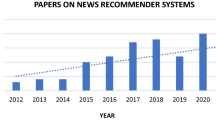Abstract
With the rapid development of digital music, the number of Western music works is continuously increasing, which makes users find it difficult to spot their favorite music works consequently quickly. Therefore, the music recommendation algorithm is applied to recommend music works in a targeted manner based on prior user behaviors, which could reduce the fatigue of the users and improve the overall user experiences. The convolutional neural network (CNN) is applied to classify the commonly-seen types of Western music, including classical music, pop music, jazz music, and Hip–Hop and Rap music. Afterward, CNN is trained to explore the two activation functions and the two gradient descent methods, which are compared and analyzed in terms of their features and performances during the training. Then, the classification methods, which are based on the spectrum and the comprehensive feature frequency of spectrum and musical notes, respectively, are compared. Research results have shown that the accuracy rate of spectrum-based classification method is 96.5%, while that of the classification method based on the comprehensive feature frequency of spectrum and musical notes increases by 2%. Thus, the proposed music classification algorithm is significant to the extraction of music high-level semantic features, as well as the promotion of deep learning method in the field of musical signal analysis.







Similar content being viewed by others
References
Chang HY, Huang SC, Wu JH (2016) A personalized music recommendation system based on electroencephalography feedback. Multimed Tools Appl 76(19):1–20
Chen C, Xu J, O’Regan D, Fu Z (2018) Positive solutions for a system of semipositone fractional difference boundary value problems. J Funct Space 5:1–12
Cheng Z, Shen J (2016) On effective location-aware music recommendation. ACM Trans Inf Syst 34(2):1–32
Costa YMG, Oliveira LS, Silla CN (2017) An evaluation of convolutional neural networks for music classification using spectrograms. Appl Soft Comput 52:28–38
Flexer A, Stevens J (2018) Mutual proximity graphs for improved reachability in music recommendation: J New Music Res 47(1):17–28
Hu X, Kando N (2017) Task complexity and difficulty in music information retrieval. J Assoc Inf Sci Technol 68(7):1711–1723
Hu X, Jin HL, Bainbridge D et al (2017) The MIREX grand challenge: a framework of holistic user-experience evaluation in music information retrieval. J Assoc Inf Sci Technol 68(1):97–112
Jin HL, Cho H, Kim YS (2016) Users’ music information needs and behaviors: design implications for music information retrieval systems. J Assoc Inf Sci Technol 67(6):1301–1330
Kai S, Fujinaga I, Mcadams S (2016) A comparison of approaches to Timbre descriptors in music information retrieval and music psychology. J New Music Res 45(1):1–15
Lee J, Chae J, Kim DW (2017) Effective music searching approach based on tag combination by exploiting prototypical acoustic content. Multimed Tools Appl 76(4):1–13
Li M, Kao X, Che H (2017) Relaxed inertial accelerated algorithms for solving split equality feasibility problem. J Nonlinear Sci Appl 10(8):4109–4121
Li Y, Cheng H, Wang J, Wang Y (2018) Dynamic analysis of unilateral diffusion Gompertz model with impulsive control strategy. Adv Differ Equ 2018(1):32
Liu F (2018a) Rough maximal functions supported by subvarieties on Triebel–Lizorkin spaces. Revista de la Real Academia de Ciencias Exactas, Físicas y Naturales. Serie A Matemáticas 112(2):593–614
Liu F (2018b) Endpoint regularity of discrete multisublinear fractional maximal operators associated with -balls. J Inequal Appl 2018(1):33
Liu H, Cheng H (2018) Dynamic analysis of a prey–predator model with state-dependent control strategy and square root response function. Adv Differ Equ 2018(1):63
Mcfee B, Kim JW, Cartwright M et al (2019) Open-source practices for music signal processing research: recommendations for transparent, sustainable, and reproducible audio research. IEEE Signal Process Magn 36(1):128–137
Nanni L, Costa YMG, Lucio DR et al (2017) Combining visual and acoustic features for audio classification tasks. Pattern Recogn Lett 88(C):49–56
Oramas S, Ostuni VC, Noia TD et al (2016) Sound and music recommendation with knowledge graphs. ACM Trans Intell Syst Technol 8(2):21
Raposo F, Ribeiro R, Matos DMD (2017) Using generic summarization to improve music information retrieval tasks. IEEE/ACM Trans Audio Speech Lang Process 24(6):1119–1128
Sánchez-Moreno D, Gil González AB, Muñoz Vicente MD et al (2016) A collaborative filtering method for music recommendation using playing coefficients for artists and users. Expert Syst Appl Int J 66(C):234–244
Schedl M (2017) Investigating country-specific music preferences and music recommendation algorithms with the LFM-1b dataset. Int J Multimed Inf Retrieval 6(1):71–84
Schindler A, Rauber A (2016) Harnessing music-related visual stereotypes for music information retrieval. ACM Trans Intell Syst Technol 8(2):1–21
Stober S (2017) Toward studying music cognition with information retrieval techniques: lessons learned from the Open MIIR initiative. Front Psychol 8:1255
Wang D, Deng S, Xu G (2017a) Sequence-based context-aware music recommendation. Inf Retrieval J 5461:1–23
Wang Z, Wang X, Li Y, Huang X (2017b) Stability and Hopf bifurcation of fractional-order complex-valued single neuron model with time delay. Int J Bifur Chaos 27(13):1750209
Wang J, Cheng H, Liu H, Wang Y (2017c) Periodic solution and control optimization of a prey-predator model with two types of harvesting. Adv Differ Equ 2018(1):41
Wang LC, Iii JOS, Limited SI (2018) Systems and methods for recognizing the sound and music signals in high noise and distortion. J Acoust Soc Am 121(4):4176
Zhang J, Zhang G, Li H (2018a) Positive solutions of second-order problem with dependence on derivative in nonlinearity under Stieltjes integral boundary condition. Electron J Qual Theory Differ Equ 2018(4):1–13
Zhang X, Liu L, Wu Y, Cui Y (2018b) Existence of infinitely solutions for a modified nonlinear schrodinger equation via dual approach. Electron J Differ Equ 147:1–15
Acknowledgements
This work was supported by Hunan Philosophy and Social Science Foundation Office with the project of “the genealogy of suona inheritor in qingshan and the research on the traditional composing” (No. 18YBA296).
Author information
Authors and Affiliations
Corresponding author
Additional information
Publisher's Note
Springer Nature remains neutral with regard to jurisdictional claims in published maps and institutional affiliations.
Rights and permissions
About this article
Cite this article
Chen, X. The application of neural network with convolution algorithm in Western music recommendation practice. J Ambient Intell Human Comput (2020). https://doi.org/10.1007/s12652-020-01806-5
Received:
Accepted:
Published:
DOI: https://doi.org/10.1007/s12652-020-01806-5




